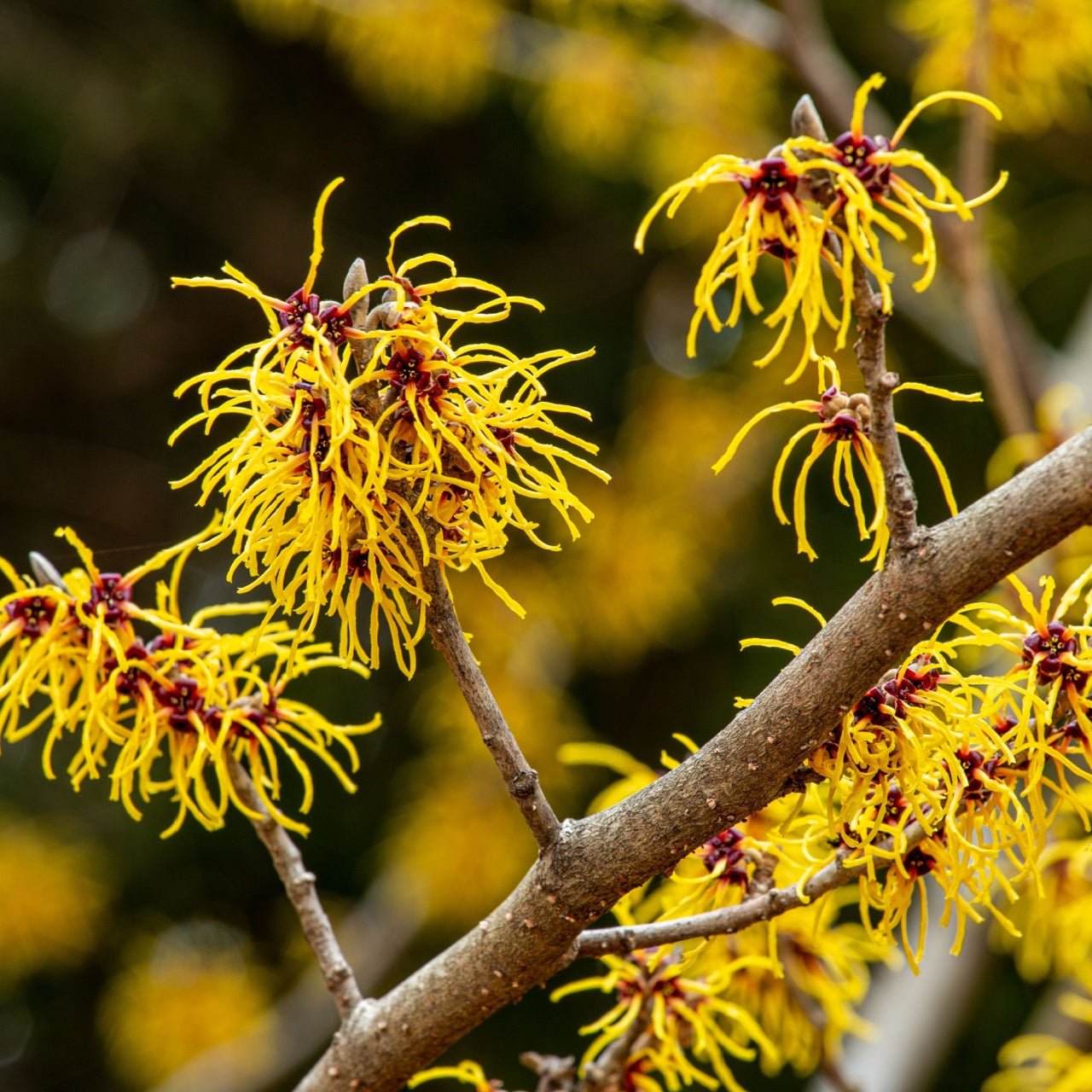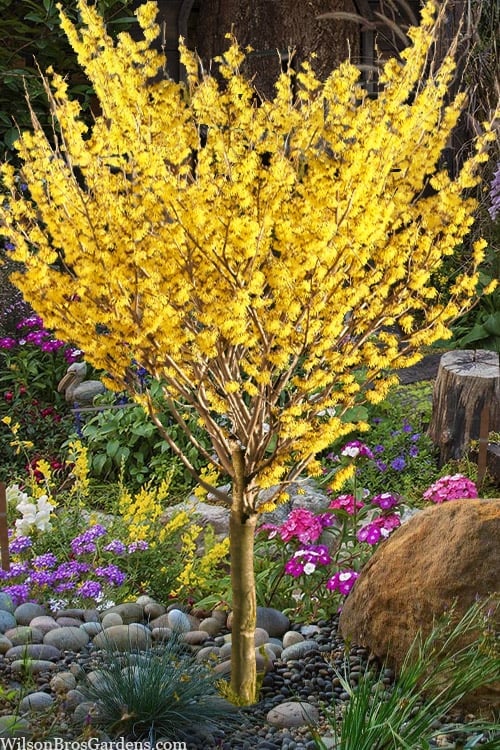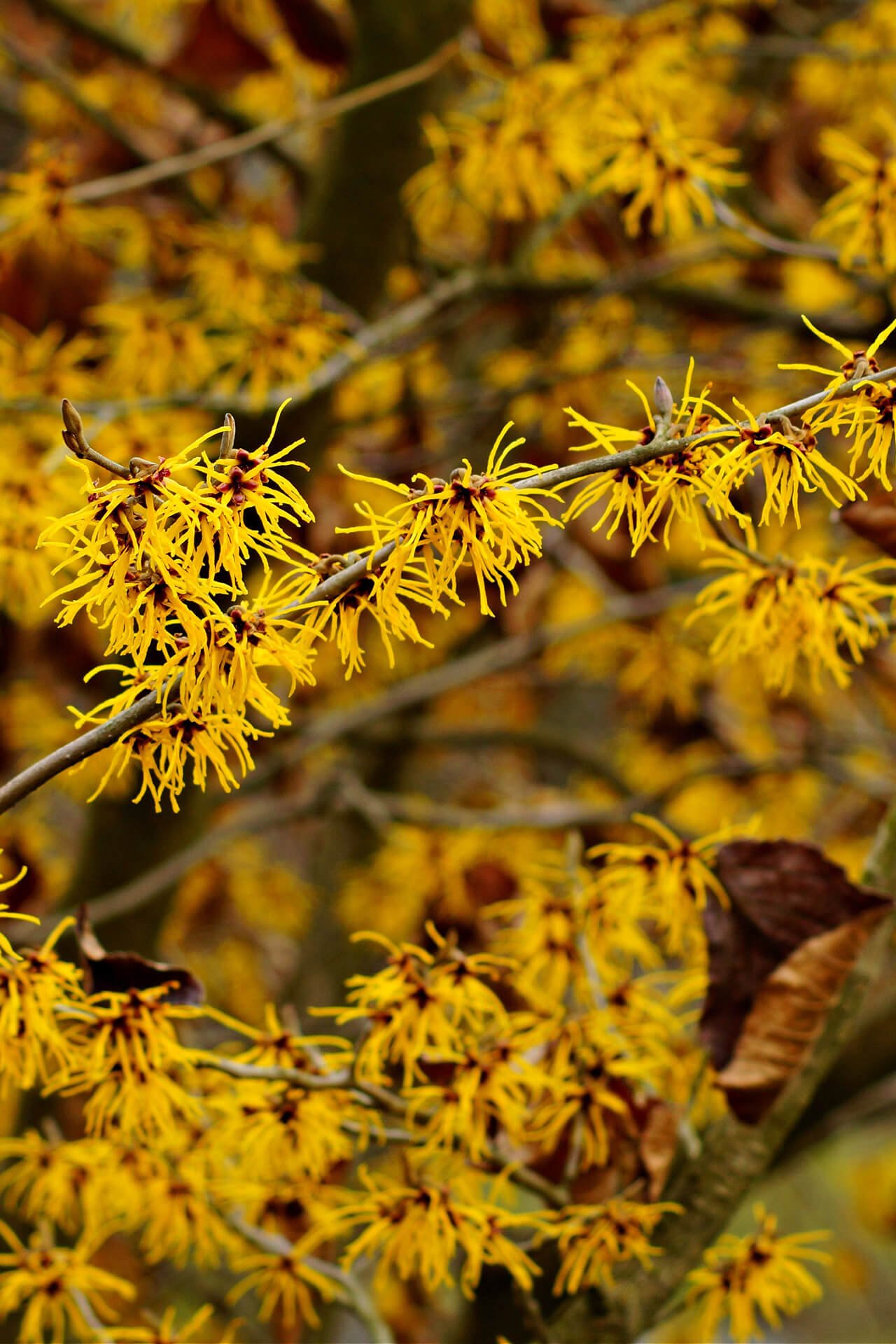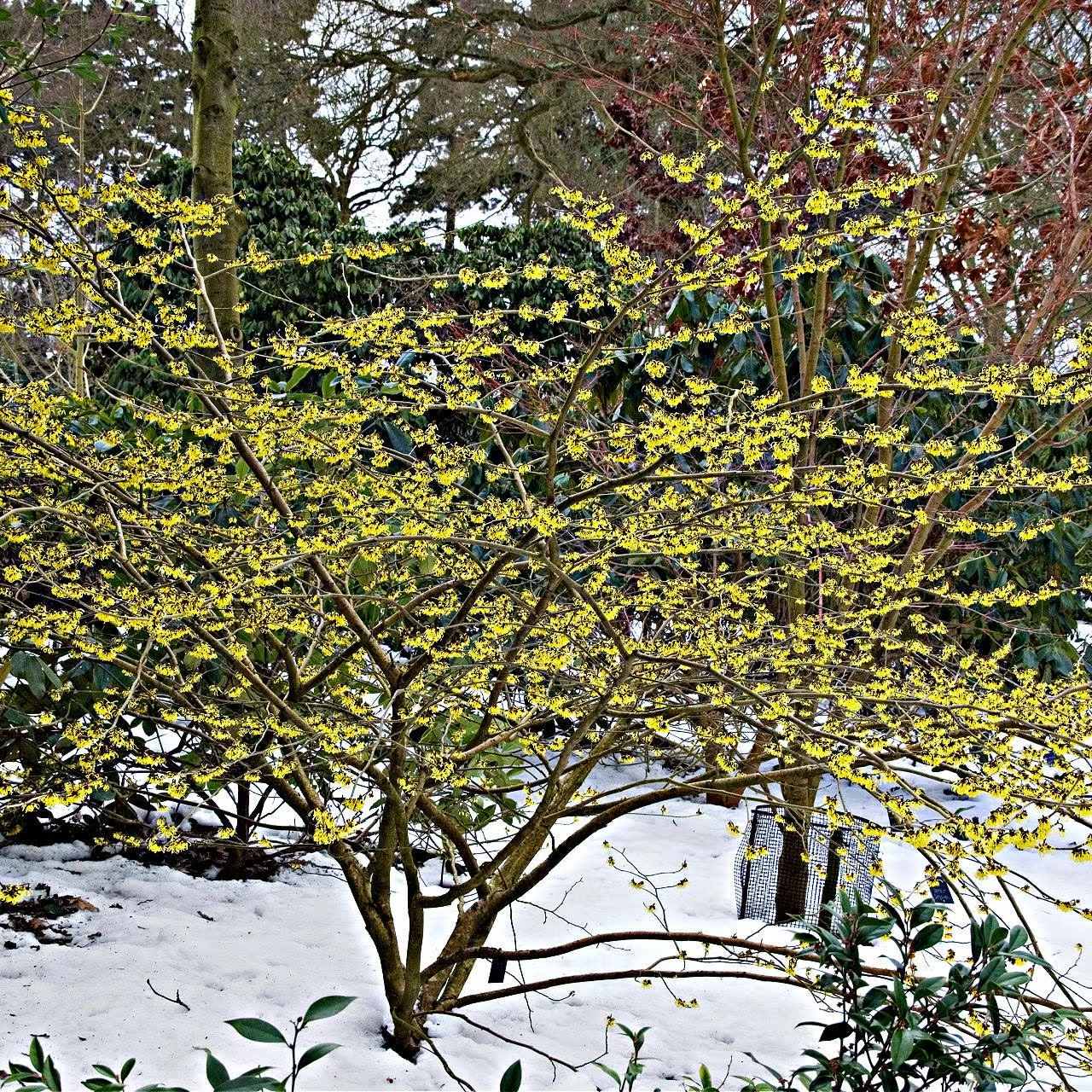




Witch Hazel
Excellent for natural privacy screening
Low-maintenance, adaptable to various soils
Vibrant fall foliage and winter blooms
Thrives in
ZONE 3-9This plant ships:
November 20251 Year Guarantee on all plants
Witch Hazel - Hamamelis virginiana
Witch Hazel (Hamamelis virginiana) is a deciduous tree that will have bright yellow blooms in the fall.
Plant Details - Witch Hazel
Family: Hamamelidaceae
Light Requirement: Full Sun
Water Needs: Moist
Height: 15 - 20 ft.
Spread: 15 – 20 ft.
Growth Rate: Fast
Bloom Time: Fall
Flower Color: Yellow
Wildlife Value: Attracts bees
Landscape Uses and Maintenance – Witch Hazel
Witch Hazel is a great tree that will complement your yard in any capacity: as a focal point, as a living fence, or as an understory plant in your woodland garden. A great option for hedging.
This plant has large, green unique leaves during the spring and summer months that will turn a golden yellow with its fall color change. This is a deciduous plant, but some leaves will remain on the tree. If you prefer a cleaner look when in bloom, simply pick the remaining dried brown leaves off.
Flowers are fragrant and can be enjoyed from afar but are better enjoyed up close. They are unique with four long, spindly petals that seem to twist.
Plant in full sun to partial shade. The best blooms will be seen in full sun.
This is a low maintenance plant that will need very little care after initial planting.
This plant will not need watering after initial planting. Tolerant of a variety of soil conditions, so plant in loamy to clay soils. Prefers well drained soil.
Fertilization is not necessary to the growth of this plant. You can put leaf mold or compost around the base of this tree to imitate the forest floor where it would naturally grow.
Attractive to bees, flies, and butterflies. Animals including turkeys and will eat the seeds.
This tree is tolerant of deer and other mammals, but it is recommended to protect it with caging or other means while it is young and easily damaged.
Noteworthy Characteristics
Witch Hazel can be planted under Black Walnut trees.
Seeds will project themselves up to thirty feet away from the mother plant.
This tree is a host plant for many butterflies, including the Spring Azure Butterfly.
This Is How Your Plants Will Look upon Delivery

Bloom Season
Fall
Bloom/Foliage Color
Yellow
Height at Maturity
Over 10 Feet
Care
Witch Hazel thrives in well-drained soil and benefits from regular watering, especially during dry spells. Prune in late summer to shape and remove dead branches. Spread a proportional fertilizer in early spring to sustain healthy growth and blooming.
Plant Reproduction
Witch Hazel spreads via seed dispersal and root suckers.
Plant bare-root shrubs during the more excellent spring or fall months, from November through April. Dig a hole twice as wide as the root system and slightly more profound than its height. Position the shrub so that the top of the roots is level with the ground, and put back the soil dug over the roots. Apply a 2-3 inch layer of mulch around the base to retain moisture and suppress weeds, ensuring the mulch does not touch the shrub's stem. Water regularly, especially during the first year, to establish strong roots. Prune shrubs as needed to promote healthy growth. In the spring, fertilize with a balanced, slow-release fertilizer suited to the specific needs of the shrub.
Shipping date depends on the date displayed and chosen when you order from the product's page.
We only accept returns on plants verified dead. If you think your plants have died, we offer a 1 year warranty, please use this File a Claim Link to verify dead plants and start with return warranty process.







Winter Blooms:
Witch Hazel produces vibrant, fragrant yellow or orange flowers even in the coldest months, brightening up winter landscapes.
Medicinal Uses:
Traditionally known for its astringent properties, Witch Hazel can be used for its natural healing benefits.
Versatile Growth:
This tree thrives in a variety of soil types and light conditions, making it a flexible choice for diverse garden settings.
Attracts Wildlife:
The flowers draw pollinators like bees and butterflies, enhancing the biodiversity of your garden.
Caring Tips
How do I care for my Witch Hazel?
Each box contains detailed care instructions and information about your product. But here's the basics.
Care Tips
Witch Hazel thrives in well-drained soil and benefits from regular watering, especially during dry spells. Prune in late summer to shape and remove dead branches. Spread a proportional fertilizer in early spring to sustain healthy growth and blooming.
Light Requirements
Witch Hazel thrives best in partial shade to full sun. It prefers dappled sunlight, especially in hotter conditions, but can endure full sun in cooler regions. This versatile shrub adapts well to various light conditions, making it easy to grow.
Hardy Planting Zones
3-9
Header
Use this content to share information about your store and products.
Frequently Asked Questions
How often should I water my plants?
How do I know if my plant is getting too much or too little sunlight?
What should I do to prepare my plants for winter?
What are the signs that my plant needs fertilizing?
How can I prevent pests from damaging my plants?
How do I choose the right plant for my climate zone?










